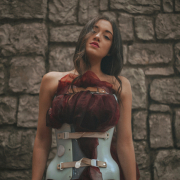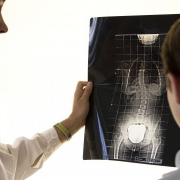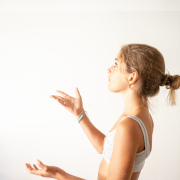A brace? Nothing to fear!
Unfortunately, scoliosis has to be treated in adolescence, which is already a very tricky and delicate phase in which youngsters often feel torn between wanting to be independent and wanting to fit in and belong.
We have all been through it and know how difficult this period of growing up can be. It’s not easy being the parent of an adolescent either. Sometimes we struggle to understand our children’s problems as they seem so far removed from our own. We might also struggle because we would like to be able to solve all their problems for them. This particular challenge, though, is one they need to overcome by themselves. What we, as adults, can do is be supportive, helping them to think things through and analyse situations, being careful never to minimise their problems or difficulties.
For adolescents, it is very important to feel part of a group, and so anything that makes them feel “different” is scary. Years ago, youngsters worried about wearing braces on their teeth for this very reason, whereas nowadays so many have orthodontic treatment that no one bats an eye.
Friendships are also important for teenagers, who will open up to one another, sharing their problems, feelings, insecurities and worries. True friends are the ones who support their brace-wearing peer (helping them to accept the device as a part of their daily life), and certainly not those who mock or tease another person for a health problem.
Also, as we all know, whenever we have what we consider to be a defect or flaw, we tend to see it as a far bigger problem than it really is. If, for example, we have a pimple on our face, however tiny, we become convinced that it’s the only thing everyone else notices about us!
In the same way, for some patients, a brace peeping out from under a t-shirt is an absolute disaster!
Compared with the braces of the past, today’s ones are made to be almost invisible under a vest or shirt. This is partly thanks to the orthopaedic technician’s skill and expertise and the specialist doctor who chooses the model.
Over the years, we have seen that our patients can do seemingly impossible things with their brace on. Just take a look at the photos and videos published on our website, www.concorsetto.it, where you can find patients offering tips on how to conceal a brace under clothes, and others who do dance shows, go to the mountains or seaside, or do sport in their brace (even athletics, skiing and gymnastics).
Seeing other brace-wearing youngsters who have accepted the need to treat their condition and managed to deal with the situation in a positive way helps to normalise the whole experience! Indeed, the key, basically, is to try and focus not on the inconvenience of a brace, but rather on the fact that spinal disorders have to be treated in order to prevent problems from arising in adulthood. It’s far better to pour your energies into fighting your scoliosis, rather than your brace. While you can’t change your brace, you can change your perception of it and how you approach it! In some cases, a patient might find it useful to talk to an expert, such as a psychologist, in order to overcome any difficulties in accepting the treatment.
Recently, one young patient even sent us a photo showing the rock band Måneskin wearing corsets, which are not so different, in the end, from braces! Who knows, this could be the start of a new trend!
The last thing to remember is to take things step by step. Start by telling just a few close friends that you have started wearing a brace. That way, later on, with their help perhaps, you should find it easier to talk about it with others. Also, give yourself time to get used to it, as it is a whole new thing for you. In this way, slowly but surely, you will soon find you are getting on OK with your initially unwelcome new “friend”!










